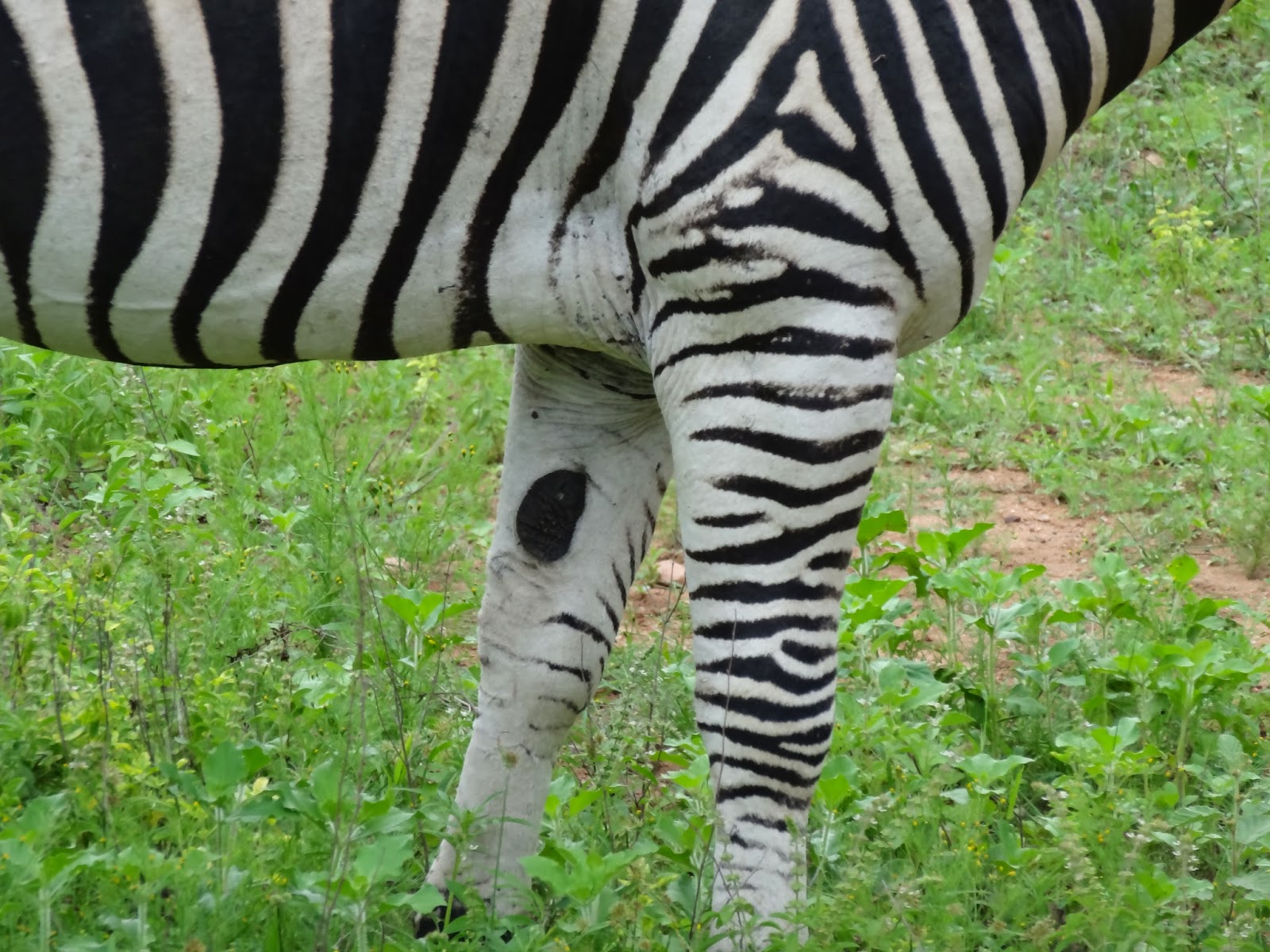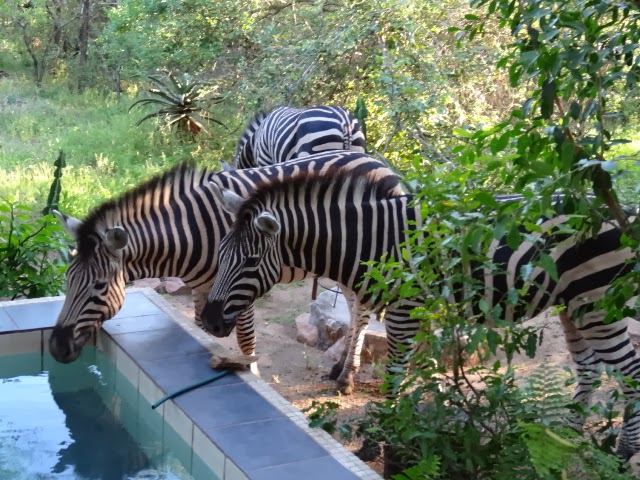 |
| Our new friend Ken also loves warthogs, as shown in his photo at his home in Marloth Park. Thanks, Ken for sharing this special moment. See, I’m not the only one that loves the warthogs in Marloth Park. These homely animals have adorable personalities making it possible to differentiate one from another, as they visit almost every day. The female in the background is on her knees eating pellets. As shown in the past, warthogs usually eat on their knees, adapted since birth with “built-in” callouses. |
Not only is Marloth Park one of the most amazing places to live on the planet, but it is also surprisingly affordable. Based on our expenses to date, we expect to be under budget by US $2500, ZAR $26,620 for our three months here.
Most of the savings we’re seeing have been as a result of the reasonable cost of food, both at the grocery store, averaging at about US $150, ZAR $1597, per week and dining out two to three times per week at an average of US $30 per evening out including beverages, tax, and tips.
 |
| This small female warthog has been visiting with the huge camera-shy male who’s butt is to the left. She often stands looking at us, hoping for a pellet, while he stays back in the bush. They are always together. We’ve yet to determine their relationship since males leave the family unit once the female is impregnated. They may be courting, resulting in a rather long courtship. The impala in the rear was waiting to see what the warthog was going to do. |
Whether dining in or out, the cost is approximately the same. When budgeting for this 90 day period, we’d anticipated the remote location would result in higher food prices than most countries.
Little did we know that the cost of food in South Africa would be affordable, as much as 50% less than we paid in the US. The produce is grown without pesticides, the meat is grass-fed and the chickens are free-range.
 |
| Duikers are loners. We’ve yet to see a baby, a pair, or a group. Very shy, they rarely get close, preferring to observe us from afar. |
Tom’s typical mixed drinks in most bars and restaurants, brandy and Sprite, are usually less than US $3.25, ZAR $34.61. My bottled water is usually US $1.13, ZAR $12. Tom says, “I can’t afford not to drink!” Two-liter bottles of a quality brandy at the local liquor store were priced at US $20.61, ZAR $220 including taxes.
Since arriving in Marloth Park, we’ve purchased meat at the local meat market, The Butchery, next door to the Farmers Market where we buy our produce. It’s hard to believe the cost of these items.
 |
| There are four packages of lean grass-fed ground beef in this batch, referred to as “mince” in Africa. The total cost of these huge packages was US $17.23, ZAR $183.50. The forward huge T-bone steak is US $3.43, ZAR $36.47. In the rear of this photo is pork chops and lamb chops. All of this meat will feed us for eight dinners, enough for two weeks considering our three-nights of dining out per week. |
In browsing in a few local boutiques, we’ve found prices on clothing and accessories equally affordable. If we had room in our luggage, we’d most certainly purchase some much-needed items for our upcoming cruises in less than eight months.
 |
| The total cost of meat for eight dinners for the two of us combined is US $37.04, ZAR $394.40, an average of US $4.63, ZAR $49.30 per dinner. Although the many familiar cuts of meat aren’t available, we’d been able to adapt quite easily. |
Services are equally inexpensive as well. Included in our rent is twice a week cleaning service. Zef, our house person, does a flawless job. Should we have wanted him for additional days beyond the included two times, the cost would be US $4.70, ZAR $50. He cleans the entire house and all three of the verandas and the pool.
 |
| As quickly as the mongoose moves about, making a delightful sound as they communicate with one another, it’s been difficult to take photos of multiples. Yesterday, our yard was surrounded by a few dozen shy mongooses, happily chirping among themselves. They eat snakes making them welcomed visitors. |
Our time in Marloth Park, including a few side trips, is proving to be more affordable than any country in which we’ve lived thus far. Add the beauty of the area and the ideal weather only hot a few months a year, temperate the remaining months. Of course, for us, the wildlife roaming freely around the house makes a return visit to Marloth Park in the future, rather tempting.




























































